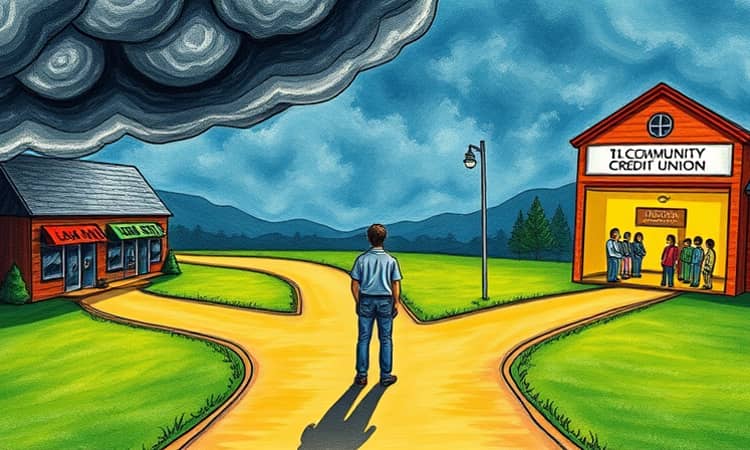Short-term financial emergencies can force individuals to seek quick solutions. Payday loans promise instant relief, but they often carry hidden costs that trap borrowers in a cycle of debt.
This article examines the prevalence of payday loans, reveals the debt trap cycle, highlights who uses these high-interest products, and offers practical, cost-effective alternatives to protect your financial wellbeing.
Understanding Payday Loans and Their Prevalence
Payday loans are short-term, high-interest loans designed to bridge the gap until the next paycheck. According to Consumer Financial Protection Bureau (CFPB) data, around 12 million Americans rely on payday loans annually.
These loans typically carry a two-week term and APRs that can exceed 600%, depending on state regulations. While legal in most states, payday lending is illegal in twelve and restricted in eighteen states plus Washington D.C.
The Debt Trap Cycle
Despite their appeal, payday loans often lead to rollover and reborrowing. Borrowers struggle to repay the initial balance plus fees.
Key findings illustrate the depth of the problem:
- 80% of borrowers reborrow or renew within 30 days.
- Only 15% repay on time without taking another loan.
- 64% renew at least one loan more than once.
- 1 in 5 borrowers takes 10+ loans in succession before repaying.
Each renewal accrues fees that can surpass the original loan amount, creating a cycle of debt that becomes difficult to break without outside intervention.
Who Uses Payday Loans
Certain demographic groups are disproportionately represented among payday loan users:
- Renters facing fluctuating housing costs
- African American households
- Adults ages 25–44 managing family expenses
- Parents coping with childcare and education bills
- Individuals struggling to cover basic monthly expenses
These groups often lack access to traditional credit or emergency savings, making them vulnerable to predatory lending practices.
Risks of Payday Loans
High costs and fees define the payday loan market. A typical fee of 15% on a $300 loan results in a $45 charge for a two-week term. Renewing that loan six times costs more in fees than the original amount borrowed.
The payday lending industry has been criticized for preying on low-income customers and demanding exorbitant fees that drive borrowers deeper into financial distress.
Default rates further underscore the risk. The average loss rate for payday loans is 55%, suggesting that many lenders do not adequately assess a borrower’s ability to repay.
Safer Alternatives to Payday Loans
Fortunately, borrowers have access to more affordable options that can prevent the debt trap:
- Bad Credit Personal Loans: These loans often offer APRs well below payday loan rates, with flexible repayment terms tailored to income.
- Payday Alternative Loans (PALs) from credit unions: Borrow between $200–$1,000, repay in 1–3 months, pay application fees up to $20, and enjoy credit card–like interest rates without overlapping loans.
- Emergency assistance programs: Local nonprofits and government agencies may provide one-time grants or low-interest loans for utilities, rent, or medical expenses.
- Borrowing from friends or family: While sometimes difficult, this option can save substantial fees and maintain personal relationships when managed responsibly.
- Employer-based advance programs: Some companies offer payroll advances with no interest or minimal fees.
By exploring these cost-effective financial solutions, consumers can avoid the steep costs and recurring fees associated with payday loans.
Arguments in Favor and Policy Considerations
Proponents of payday loans cite several benefits:
- Transparency: Terms are displayed prominently in-store.
- Speed: Loans can be approved in minutes without credit checks.
- Comparative cost: Some argue fees may be lower than overdraft or late utility reconnect fees.
- Consumer choice: Borrowers may prefer payday loans over skipping critical bills or seeking loan sharks.
However, policymakers continue to debate the best approach to regulation. Some advocate for stricter regulations to protect consumers, including caps on fees and APRs. Others argue that easing restrictions would foster competition and reduce costs.
The CFPB has played an active role in researching the industry and proposing rules to curb harmful practices while preserving consumer access to small-dollar credit.
Empowering Financial Health and Future Steps
Breaking free from the payday loan cycle requires both individual action and systemic change. Here are steps to build stronger financial resilience:
- Establish an emergency fund, even if you start with a small amount.
- Create and stick to a realistic monthly budget to anticipate expenses.
- Seek membership in a credit union to access PALs and lower-cost loans.
- Consult a nonprofit credit counselor for personalized debt-management plans.
- Advocate for local or federal policies that limit predatory lending practices and expand access to fair credit.
By choosing safer alternatives and advocating for consumer protections, borrowers can avoid the hardships of predatory lending and build a foundation for long-term financial well-being.
References
- https://www.bankrate.com/loans/personal-loans/payday-loan-statistics/
- https://www.pewtrusts.org/en/research-and-analysis/articles/2023/06/07/what-does-the-research-say-about-payday-loans
- https://blog.massmutual.com/planning/dangers-payday-loans
- https://www.pewtrusts.org/en/research-and-analysis/articles/2023/01/09/rent-a-bank-payday-lenders-new-filings-show-55-average-loss-rates
- https://debthammer.org/payday-loan-debt-statistics/
- https://www.incharge.org/debt-relief/payday-loan-alternatives/
- https://www.consumerfinance.gov/about-us/newsroom/cfpb-finds-four-out-of-five-payday-loans-are-rolled-over-or-renewed/














